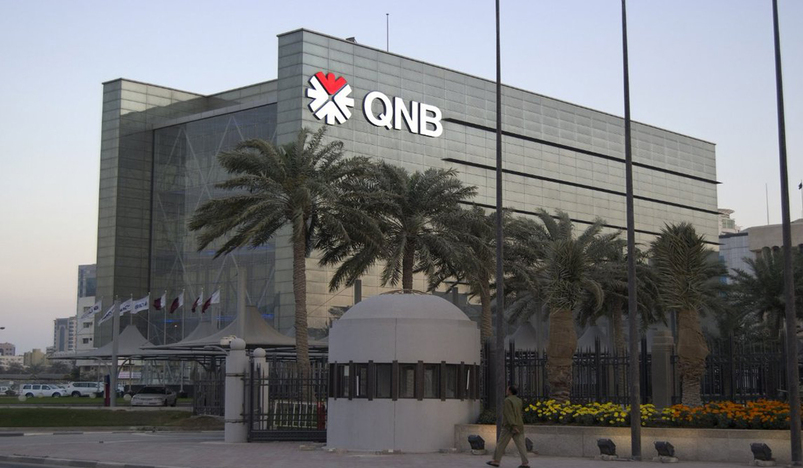
QNB
Qatar National Bank (QNB) said that China was undeniably the most important growth driver for the global economy since the Great Financial Crisis of 2008-09 (GFC). In fact, the country accounted for approximately 40 percent of global growth from the GFC to 2019, before the pandemic produced significant shifts in macro dynamics across countries.
In its weekly commentary, QNB pointed out, "A combination of domestic factors has since led to a pronounced economic slowdown in China. The implementation of the Zero Covid policy last year, marked by lockdowns in tier-1 cities, restrictive bank lending practices towards the overleveraged real estate sector, and aggressive regulatory clampdowns across various industries, culminated in a GDP contraction in nominal USD terms. Even the re-opening this year was not enough to produce positive growth in USD terms, due to the 8 percent depreciation of the renminbi so far in 2023." "As a result, on a more consolidated basis, Chinas overall absolute and relative performance post-pandemic slipped significantly. The gap between its average annual USD nominal growth versus global growth declined to 100 basis points (bps), from 910 bps post-GFC. Importantly, analysts point to little hope for optimism as government, households and investors seem unwilling to spend or invest more aggressively over the short-term.
"This leads to some of the most important questions that investors and macro observers have been raising: is China still going to be a powerhouse for global growth?" The bank explained, "In our view, we expect to see China maintaining a moderate USD nominal growth rate of around 6 percent per year over the next several years, accounting for 5 percent real growth and 1 percent of FX-adjusted inflation. While this is weaker than its long-term performance and much weaker than the performance during the "boom" post-GFC years, it is still significantly above the expected global growth of around 4.5 percent. In other words, we still believe that China will continue to "catch up" towards more advanced levels of income per capita and productivity, which should be supportive for global growth.
"Three main factors sustain a more moderate take on Chinas growth contribution going forward, despite the slowdown in its pace of growth.
"First, scale matters when it comes to the impact of a countrys growth in the global economy. The larger the base (the size of GDP), the lesser the need for high growth rates to create a big impact globally. From 2008 to 2023, for example, Chinas GDP expanded from USD 4.6 trillion (Tn) to USD 17.7 Tn, increasing its share of global GDP from 7 percent to 17 percent. This means that for each 1 percent of GDP that China grows now, it adds almost USD 200 billion (Bn) to the global economy, versus about USD 5 Bn in the past. Hence, if China maintains a 6 percent nominal growth over the medium-term, it would still add more than USD 1 Tn to the global economy every year, an amount that is similar in size to the entire GDP of the Netherlands.
"Second, Chinese policymakers are becoming more concerned about the domestic economic slowdown and hence started to take policy action to spur growth. China is currently working on pivoting its macroeconomic policy stance from neutral to supportive or accommodative. Policy actions so far include a few rounds of interest rate reduction, liquidity injections and fiscal spending in infrastructure projects. There are also a host of more than 100 new initiatives targeting support to the private economy, consumer spending, easier entry visas and the attraction of foreign direct investment. This should be further calibrated over the coming months and start supporting aggregate demand, keeping a minimum growth floor for activity. We expect this to strengthen and revitalize Chinas economic contribution to global growth.
"Third, a large part of the current slump in activity is associated with poor investor sentiment, which is to a large extent due to regulatory uncertainty. Over the last several quarters, comprehensive regulatory reviews in certain industries, such as private education, fin-tech, e-commerce, food delivery and ride hailing, created severe business uncertainty, partially preventing new investments and even innovation in related activities. This has negatively affected consumer and business confidence. However, with the aforementioned policy measures and stimulus plans that are underway, sentiment could reverse once there is more clarity on the specifics and the timeline of execution.
QNB concluded, "All in all, we expect that China would continue to be a leading engine for growth over the medium-term, due to still significant growth for a large economy, more proactive policy support and the eventual return of private sector risk appetite."
(QNA)
.jpg)
Qatar Secures Place Among the World's Top 10 Wealthiest Nations
.jpg)
Hamad International Airport Witnesses Record Increase in Passenger Traffic

Saudi Arabia: Any visa holder can now perform Umrah

What are Qatar's Labour Laws on Annual Leave?
Leave a comment